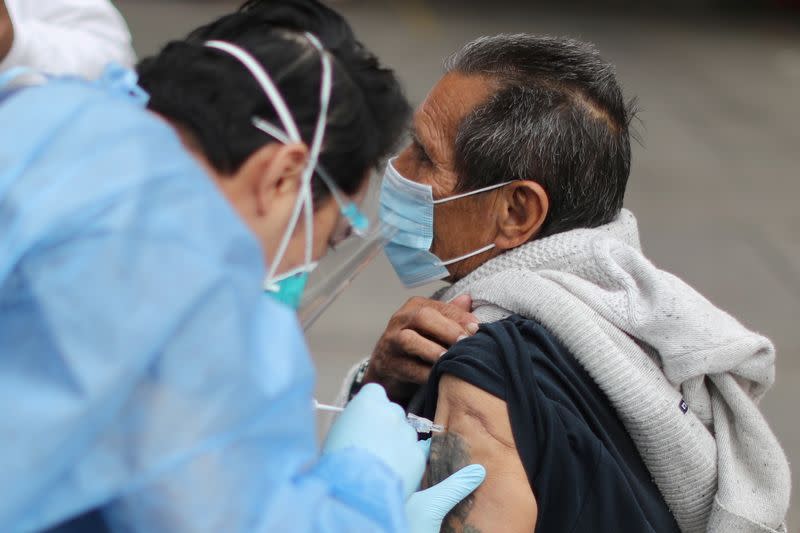By Nancy Lapid
(Reuters) – The following is a summary of some of the latest scientific studies on the new coronavirus and efforts to find treatments and vaccines for COVID-19, the disease caused by the virus.
Post-vaccination COVID-19 may be less contagious
People who receive the COVID-19 vaccine may still be infected with the new coronavirus, although they are likely to be protected against serious illnesses, and a new study suggests that they, too, may be less contagious. In a large Israeli health maintenance organization, where 650,000 members received the two-dose vaccine from Pfizer Inc and BioNTech SE, the researchers identified 2,897 patients who subsequently tested positive for COVID-19. The amounts of virus in nose and throat smear samples were reduced four times for infections that occur at least 12 days after the first dose of the vaccine compared to what is normally seen in unvaccinated COVID-19 patients, the team Maccabi Health Services research and Technion – Israel Institute of Technology found. It is known that viral loads are related to contagiousness and the severity of the disease. But this study was not a randomized trial and did not analyze the viral loads of patients over time, nor the rates at which their contacts were infected, which would be the most direct evidence of whether a vaccine reduces the transmission of the virus. Still, the authors concluded in an article published on Monday on the medRxiv medical site before the peer review: “These reduced viral loads suggest less infectiousness, further contributing to the vaccine’s impact on the spread of the virus.” (https://bit.ly/2LK5HnE)
Study shows several benefits of COVID-19 with arthritis drug
A large study adds evidence that Roche’s arthritis drug tocilizumab, sold under the brand name Actemra, reduces the risk of death among patients hospitalized with COVID-19, shortens their hospitalizations and reduces their need for mechanical ventilation. The randomized study involved more than 4,000 patients with varying degrees of illness. Some needed only simple oxygen therapy, while others needed mechanical ventilation. Most were also receiving a steroid like dexamethasone. The 28-day death rate was 29% for patients in the tocilizumab group and 33% in the control group, according to a report published on Thursday on the medRxiv medical website before the peer review. After taking into account the age, sex and other risk factors of the patients, tocilizumab was associated with a 14% reduction in the risk of death. “We now know that the benefits of tocilizumab extend to all COVID patients with low oxygen levels and significant inflammation,” said co-leader of the study, Peter Horby, from the University of Oxford, in a press release. Used in combination with steroids, Horby added, “the impact is substantial”. (https://bit.ly/3aUZhuy)
Bone marrow cells travel to the brain in some COVID-19 patients
Very large bone marrow cells are appearing in the brains of people who died of COVID-19, which may help explain some of the neurological problems associated with the disease, according to the researchers. The cells, called megakaryocytes, normally reside in the bone marrow and produce platelets for blood clotting. “We found that in some patients who died of COVID-19, the capillaries – the smallest blood vessels – contained very large cells called megakaryocytes,” study leader David Nauen of Johns Hopkins University told Reuters. “They are so large that they can obstruct blood flow through capillaries and limit the supply of oxygen to the brain, which can impair brain function.” As reported on Friday in the journal JAMA Neurology, his team studied the brain tissue of 15 patients who died of COVID-19 and found megakaryocytes in five of their brains. “What signaled these cells to leave the bone marrow and travel to the brain is unknown, but COVID-19 causes disruptions to the clotting system and it is possible that this is related,” said Nauen.
Open https://tmsnrt.rs/3c7R3Bl in an external browser to see a Reuters graph on vaccines under development.
(Reporting by Nancy Lapid; Editing by Will Dunham)
